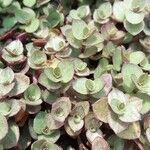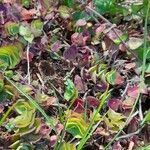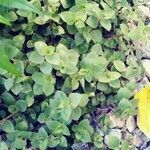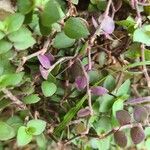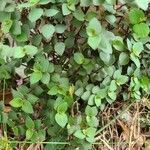Herbs, perennial, mat-forming, repent (flowering stems ascending). Leaves 2-ranked, gradually reduced toward ends of flowering stems; blade ovate to lanceolate or lanceolate-oblong, 1--3.5 ´ 0.6--1 cm (distal leaf blades much narrower than sheaths when sheaths opened, flattened), margins scabrid, apex acute, glabrous. Inflorescences sessile in axils of distal leaves of flowering stems, composed of pairs of sessile cymes (sometimes reduced to single cymes). Flowers bisexual and pistillate, odorless, subsessile; petals inconspicuous, white, lanceolate, 3--6 mm; stamens 0--6, long-exserted; filaments glabrous; ovary 2-locular, stigma penicillate. Capsules 2-locular. Seeds 1 mm.
